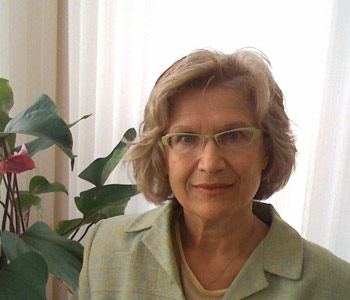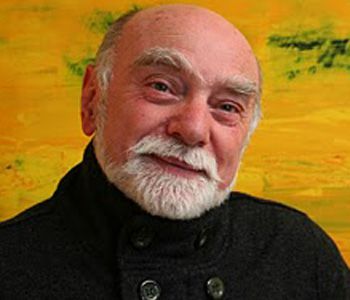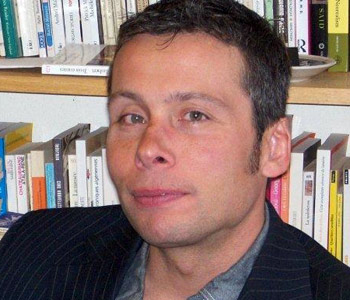Joseph Margolis
The Arts and the Definition of the Human: Toward a Philosophical Anthropology
Stanford University Press
200 pages, 9 x 6 inches
ISBN 978 0804759540
ISBN 978 0804759533
I show how looking at paintings and reading literature depend on how sensory perception and understanding are formed and transformed by the way in which we ourselves are first formed, culturally, as selves, and how an adequate account of our ability to engage with the arts (and other selves) requires a quite distinctive theory of what it is to be a self or person—what I call a philosophical anthropology.
The theory I sketch characterizes the human self as a culturally emergent, hybrid transformation of the native biological powers of Homo sapiens effected by the human infant’s ability to internalize and master the language of an environing society and whatever other abilities that makes that transformation possible. The underlying idea, that the human self is (in this sense) a “natural artifact,” has quite radical possibilities; however I apply the idea to familiar but quite ordinary puzzles regarding our interest in the fine arts.

The present book addresses, in an accessible way, an essential piece of the general question that ramifies through the whole of the human world: what is the nature of a human being and how does he function in the physical and cultural world he inhabits?
Looking at paintings and reading books, I suggest, are abilities to “penetrate,” culturally informed and culturally transformed by our mastery of language and our sense of the practices and history of some formative home society. They are learned skills adjusted to our distinctive interests regarding artworks, not simply the same as our perfectly ordinary ability to see and read. In my opinion, prevailing theories of philosophies of art have not sufficiently grasped the full complexity of this condition, especially in the Anglo-American philosophical literature.
I examine a number of prominent accounts of how we perceive paintings and understand literature drawn from the best-known, current philosophical theorists of art, and demonstrate how prevailing views actually produce insuperable paradox and contradiction. I began, quite early in my career, with the profound puzzles posed by what we call interpreting artworks. I realized that interpreting artworks must be very closely related to interpreting the language, behavior, history, social practices, and the careers of human beings. It is even akin to the anthropological study of physical phenomena: for instance, attempting to determine the “meaning” of the rock formation of the Olduvi Gorge in dating the fossil remains of early man.
I was at once struck by the failure of prevailing views to come to terms with the radical informality, open-endedness, and tolerance for divergent and even incompatible and incommensurable interpretive options that critical practices seem to support; hence, also, with the failure of much of current philosophy to formulate a congruent conception of human “nature,” intelligence and reason, culture, history, and, most importantly, what sort of being the human self must be to have mastered the kinds of artistic and interpretive puzzles I pose, both here and elsewhere.
So the present book addresses, in an accessible way, an essential piece of the general question that ramifies through the whole of the human world: namely, what is the nature of a human being and how does he function in the physical and cultural world he inhabits? Here, I've restricted myself to certain intuitively familiar puzzles regarding what we claim we see in viewing art and what we claim to understand in reading literature. The running argument of the book focuses on the easily isolated questions of seeing and understanding (artworks); the opening and closing materials provide a fairly brief but wide-ranging account of “the definition of the human,” informing my answers to the questions posed.
In the Prologue to my book, I offer a summary of my theory of the human self and explain the conceptual linkage between the definition of the human and the theory of what it is to engage the arts in ways that depend on visual perception and on understanding what we read. In the Epilogue, I try to locate the book's contribution, within its niche in the history of Western philosophy.
My thought is that “modern” modern philosophy really “begins” with Immanuel Kant’s introduction of his “transcendental” question—here applied to our perceiving paintings and understanding literature. This proved to be a transformative moment in Western philosophy. Kant's question, “How is ______ possible?” (for instance, scientific knowledge or moral judgment; and now, here, the perception of paintings and the understanding of literature) proves to be surprisingly complex, stubborn, but inescapable. This is a question on which the whole of philosophy, and in a sense every form of rational inquiry, depends.
And yet, Kant's own application of his transcendental question proved to be inadequately examined (by Kant himself) and, ultimately, indefensible in the form he originally advanced. It had to be corrected in a deep way, and was, magisterially, though problematically, by the so-called Idealist tradition that culminates in the work of Hegel, roughly signifying the historicizing and cultural penetration of all our inquiries. This, at any rate, is how I read matters.
The inseparable contributions of Kant and Hegel, interpreted in endlessly inventive ways, provide the largest, most instructive philosophical vision within which all of the most promising questions of current philosophy make their useful contribution. The analysis I offer fits congruently within the most central tradition of philosophical speculation that modern Western thought has as yet produced. The book is a short one; the issue I raise requires a fresh beginning and a clear sense of the philosophical world to which my argument and analysis rightly belong.

I don't pretend to determine whether the world is a flux or depends on some ultimate invariance. I think we must decide for ourselves, however, if the conception of a fluxive world can compete effectively with the usual commitment to invariance.
Viewed in a wider context, The Arts and the Definition of the Human is but a single piece in a larger philosophical venture, one meant to explore the viability and attraction of a picture of the world. This massive undertaking is not a chaos, but a flux, an order of things that is never fixed or changeless, yet regular enough to support all our sciences and inquiries and projects, enabling us to understand our special talents in mapping the world's properties.
There is no completely formulated and developed version of this sort, though there have been brief efforts along these lines both in the ancient world and in modern times. The implications of such a conception are very different from those of views committed to one or another form of invariance or necessity. Suppose, for instance, that the world does not obey changeless and exceptionless laws, or that what we count as a true science, at every point of contested discovery, is itself a construction of our own, provisionally favored in accord with our historied interests, which are themselves bound to be replaced by interests answering to the changing features of the world we know.
I don't pretend to determine whether the world is a flux or depends on some ultimate invariance. I think we must decide for ourselves, however, if the conception of a fluxive world can compete effectively with the usual commitment to invariance. Thinking along such lines could change our picture of the world and our belief that we may rightly judge whether our ventures are rational and defensible or not.




We don't put paywalls. We don't distract you with ads. We don't sell your data.
Please help to keep this running!